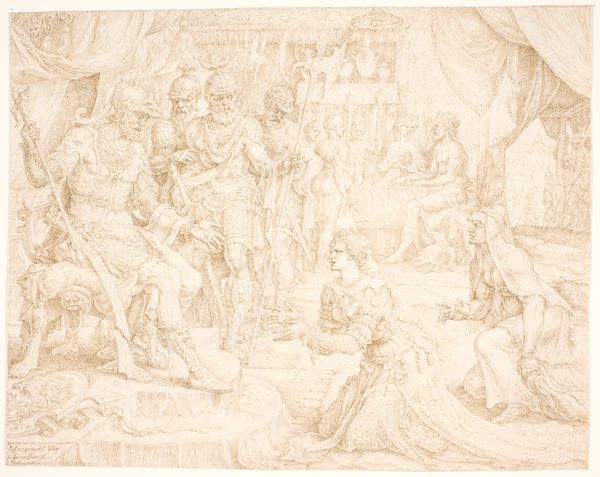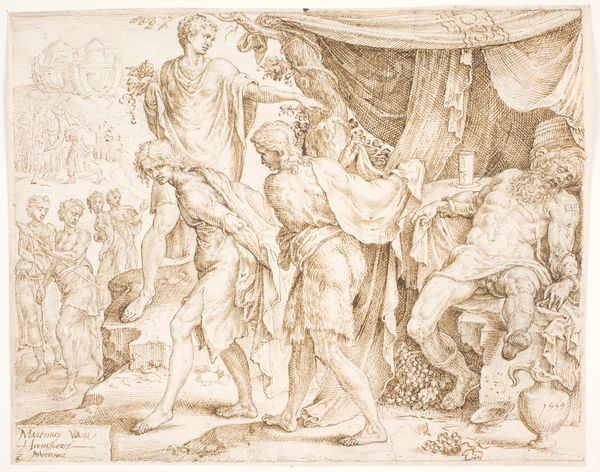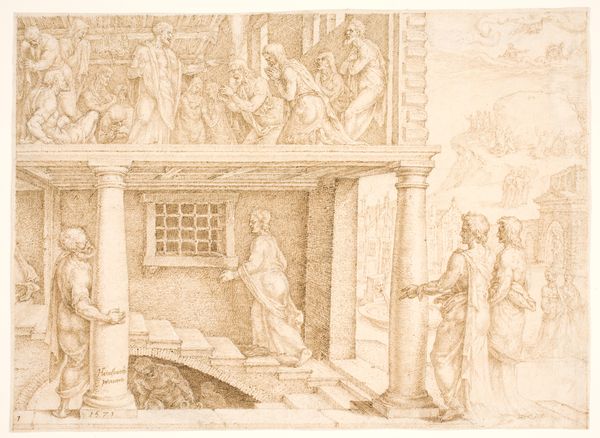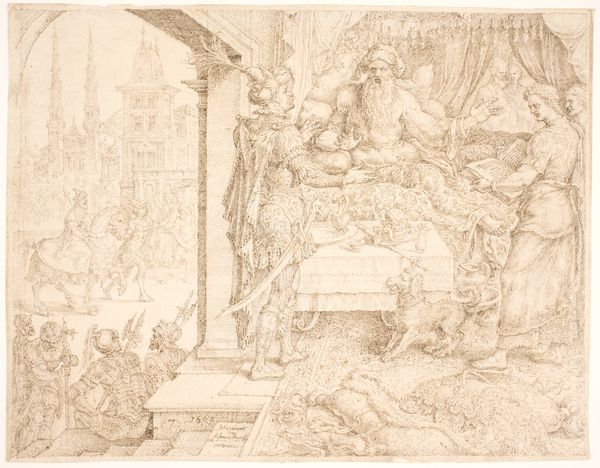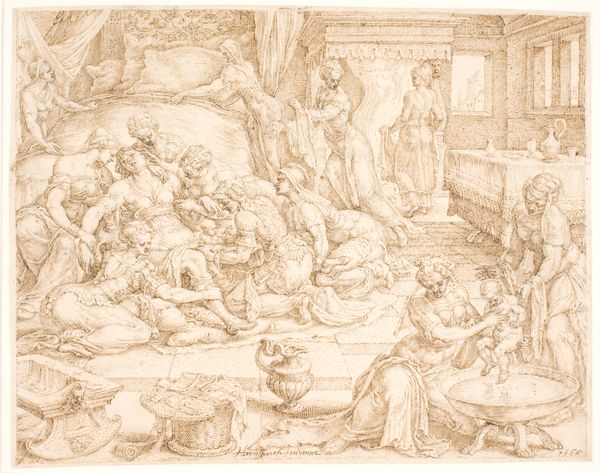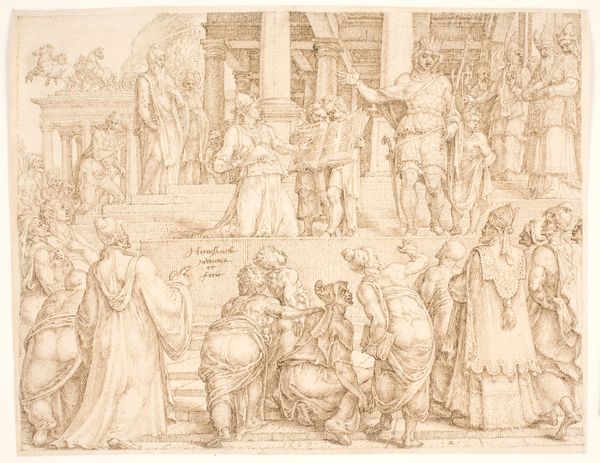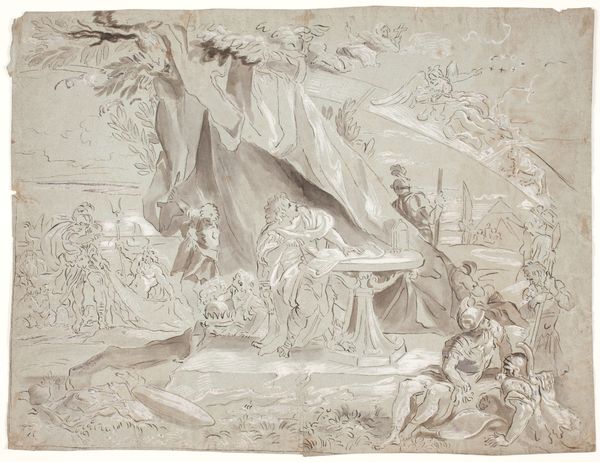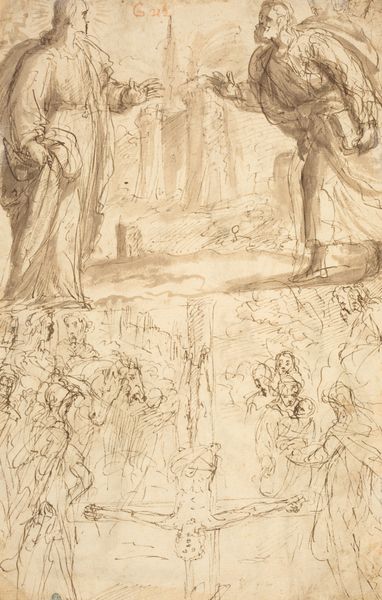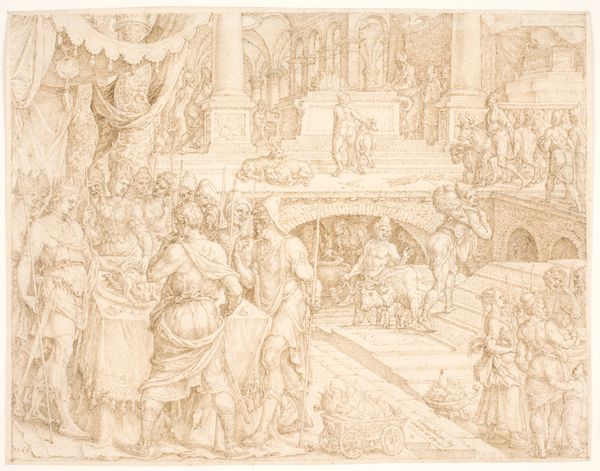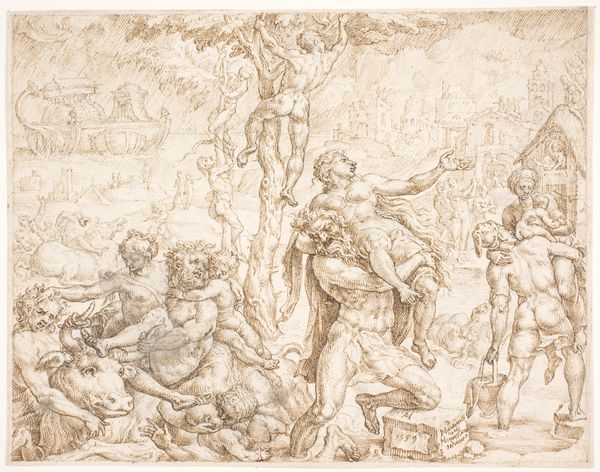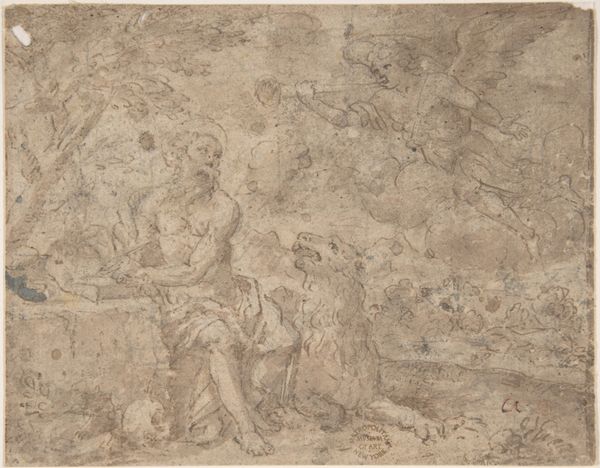
drawing, etching
#
drawing
#
narrative-art
#
etching
#
etching
#
mannerism
#
figuration
#
history-painting
#
northern-renaissance
#
nude
Dimensions: 197 mm (height) x 250 mm (width) (bladmaal)
Curator: Here we have "Judith Cutting off the Head of Holofernes" by Maarten van Heemskerck, created in 1564. It’s an etching currently held at the SMK, Statens Museum for Kunst. Editor: My initial reaction? An incredibly detailed, almost feverish rendering of a gruesome act. The lines create a textural density that's quite striking, but the overall impression is… unsettling. Curator: I agree about the detail. Look closely, and you see the crosshatching, the labor involved in creating light and shadow. The physical act of making such a precise etching is significant, reflecting the value placed on craft in the Northern Renaissance. Editor: Absolutely, and the subject matter! Judith, a woman taking violent action against a male oppressor. It's such a loaded narrative, especially considering the historical context of gender roles and power dynamics. Was this artist making a statement? Was he reflecting anxieties of a changing world? Curator: It’s hard to say definitively, but considering Heemskerck's other work, and the political climate of the time, we can appreciate the sheer technical skill alongside the narrative weight. This wasn’t some mass-produced print; it was an involved, deliberate creation. The very act of producing this would have required significant planning and specialized knowledge. Editor: And notice how Judith is not just a symbol of piety, as the narrative often goes, but someone claiming agency with a blade. We can't separate the artistic choices—the details of her clothing, her pose—from the broader historical understanding of female strength. I find her gaze powerful, even righteous. Curator: But the lines also denote a level of stylization – it has elements of mannerism, where proportion and the conventional form are heightened in ways that distort conventional perception. Consider how the bodies are positioned in that space – how their very physicality is rendered with line, form, and volume. It is a virtuoso demonstration of technique, a tangible output of meticulous labor. Editor: Exactly, so the artwork functions on multiple levels: as a display of skill, yes, but also as a potentially subversive comment on gendered violence and power. Viewing it today, we cannot unsee these layers of meaning. Curator: Well, considering all the aspects of labor that went into creating the print, from the sourcing of materials to the labor, we also witness here a singular product of a particular place and time in Europe. Editor: In any case, it provides insight on its period in both form and content—a statement about technical expertise as well as a fascinating challenge to received historical interpretation.
Comments
No comments
Be the first to comment and join the conversation on the ultimate creative platform.
